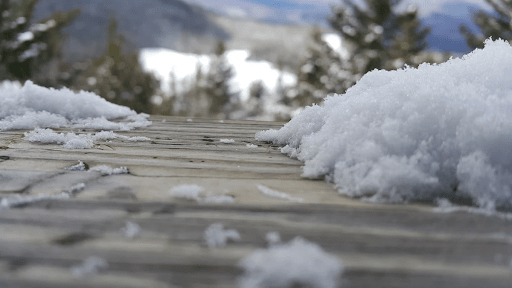Winter-Care for Concrete: Tips for Outdoor Surface Protection

As the seasons change and winter sets in, it is important to prevent outdoor surfaces from challenges ahead. By soaking acrylic sealer into the concrete, you can protect your surface from a water barrier that works to prevent it from penetrating against moisture and de-icing salts. So, the care of winter involves a lot of preventive measures before the onset of winter and these ways help to corrode the concrete surface.
Importance of Winter Care for Concrete Surfaces:
Harsh winter conditions can cause it to deteriorate and cause cracks and spalling. This harsh condition can take a toll on concrete. You can not handle these issues without proper guidance. With proper maintenance, you can address these issues promptly which may also become serious but maintenance leads to safety concerns and the need for costly repairs.
If you neglect the proper maintenance during the cold weather then this laziness can cause cracks, deterioration, and spalling and also pose to the expensive repairs.
In order to maintain the durability and lifespan of outdoor concrete surfaces it is considered crucial to take action like sealing cracks before freezing temperature, promptly clearing snow and ice, and refraining from utilization of corrosive de-icing chemicals.
This proactive care surely prevents you from many issues. Taking prevention measures during the winter, you can keep sidewalks, driveways, and other concrete structures, protecting them from the damage impacts of frost and snow.
Common Winter Damage To Concrete:
- Freeze-Thaw Cycling: When the water freezes, keep in mind that it expands. This expands water insert pressure which causes leaks to cracks in concrete.
- Frost Heaving: The freezing of moisture underneath concrete can lead to pushing it upward and forming uneven surfaces.
- Scaling: The combination of de-icing and freeze-thaw cycles can lead to peeling of the above layer of concrete.
- Corrosion of Reinforcement: The combination of de-icing salts and moisture causes the corrosion of steel by reinforcement in concrete.
- Reduced Durability: The various factors of winter weather lead to a reduction of the durability of concrete and after this issue, it demands costly repairing.
Post-Winter Maintenance Tips for Outdoor Surfaces
# 1 - Clean Thoroughly:
For the maintenance of outdoor surfaces clean it thoroughly from the debris and leftover snow.
# 2 - Repair Cracks:
Patch up type of gap in the concrete to stop water penetration which causes potential deterioration.
# 3 - Monitor for Damage:
On a regular basis monitor the damages for inspection of your outdoor surface. It enables you to address scaling, spalling, and other issues.
# 4 - Plan for Future Protection:
Installing snow guards or heated mats which cause to protect the outdoor surfaces from the snow accumulation
# 5 - Regular Maintenance:
In order to put your surface in optimal condition must keep a view routine-wise throughout the year
Snow & Ice Removal Techniques
- By manual method clear the snow. Start this process from the center of the surface and work outward.
- Cut the thick ice pieces by using the tools or scratches or ice chopper.
- Pour warm water to the upside of the snow surface which also helps to melt the ice.
- In the market there are also snow-melting mats available so install these on the surface to prevent form snow accumulation.
- Use taps or plastic covers for the purpose of protecting covering from snow during any kind of storm.
Last Words:
In conclusion, to maintain the outside surface from access to snow in winter and decrease damages by maintaining its resilience it is considered important to know about the prevention measures. For this purpose, you can use the concrete calculator to determine the amount of sealant needed to prevent concrete during the cold weather. It is essential to maintain the durability of concrete in winter conditions.